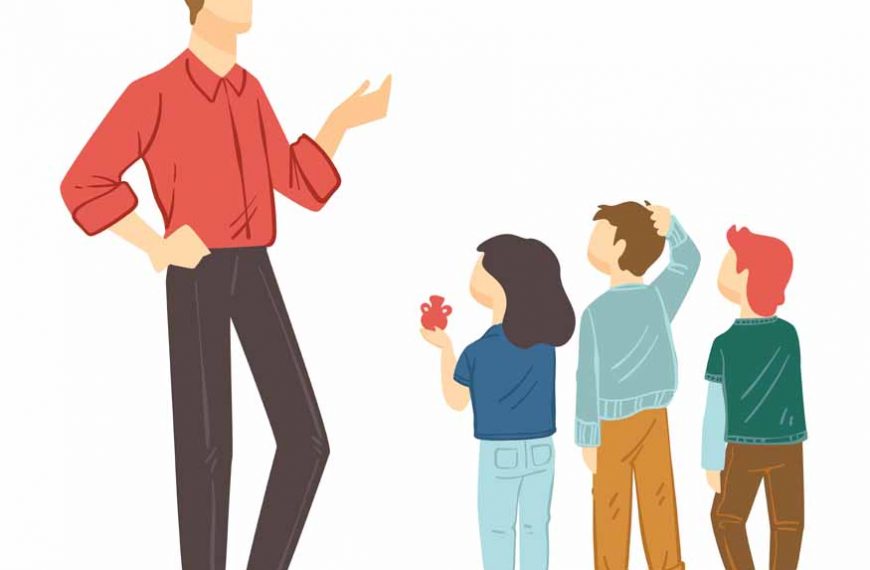In a rapidly evolving world, the need to maintain children’s safety is of paramount importance. One significant aspect of this involves teaching them about stranger safety without installing an unwarranted fear in their hearts. While safety tips for kids are abundant, knowing how to communicate them effectively is crucial. This article delves into this topic, providing guidance on how to keep your young ones safe without frightening them unnecessarily.
Stranger Safety Tips: Defining ‘Stranger’
The first step in stranger safety for kids is defining what a stranger is. While the word may evoke a sense of dread, it’s crucial to make children understand that a stranger is merely someone they don’t know. A simple analogy would be when they first met a friend at school; before introductions, that friend was technically a stranger.
This perspective helps to tone down the negative connotations associated with the word and encourages children to adopt a more balanced and alert approach rather than a fearful one.
Safety Tips for Kids: Awareness Over Fear
- Trusting Their Instincts:
- The No Secrets Rule:
- The Buddy System:
Educate kids that it’s okay to trust their gut feelings. If they feel uncomfortable around someone, even if that person isn’t doing anything explicitly wrong, it’s okay to walk away or seek a trusted adult.
Emphasize that no adult should ask them to keep secrets, especially from their parents or guardians. This is one of the crucial stranger safety tips that prevents potential grooming or manipulation.
This is a timeless strategy. Whenever possible, kids should travel or play in pairs or groups. There’s strength and security in numbers.
The Right Way to Seek Help
It’s a myth that children are always safest with women or individuals in professional uniforms. In teaching stranger safety for kids, it’s essential to drive home the point that appearances can be deceiving. For instance, if lost in a shopping mall, rather than approaching an individual, it would be safer for a child to approach a shop cashier or go to an information desk. The idea is to seek help from fixed, public sources rather than individuals who might be passing by.
Digital Stranger Safety Tips
In our technologically advanced age, stranger danger isn’t just a physical realm concern. Digital spaces, like social media platforms and online games, can sometimes harbor individuals with malicious intentions. It’s vital to extend stranger safety tips into the digital realm:
- Limiting Personal Information:
- Avoid Sharing Images:
- Keep Communication Open:
Children should be educated not to share personal details, including their full names, addresses, or schools.
Caution them against sharing images, especially those that could give away their location or identity.
Encourage your kids to speak about any uncomfortable encounters online, ensuring they understand they won’t be in trouble for being honest.
Addressing Media Influences: What is Stranger Things About?
Given the popularity of shows like ‘Stranger Things’, children might derive their perceptions of strangers from such media. It’s essential to use these opportunities to address reality versus fiction. While the series paints a thrilling picture of kids befriending strangers and tackling supernatural forces, real-life scenarios can be different. Use examples from the show to highlight decision-making, potential dangers, and how real-life situations should be approached differently.
What are Stranger Things About? The Influence of Pop Culture
It’s worth revisiting the impact of media and pop culture on children’s perceptions of strangers, as this can be a double-edged sword. While shows like ‘Stranger Things’ can be leveraged for teaching safety, they can also inadvertently glorify risky behaviors.
Parents should be conscious of what their children watch and make an effort to discuss and clarify the difference between fictional narratives and real-life safety. This ensures that children are not emulating behaviors from television without understanding the potential real-world consequences.
Preparing for Different Scenarios: Role-playing and Education
An engaging way to teach stranger safety for kids is through role-playing. Engaging children in various real-life scenarios can create a deep-rooted understanding of how to respond appropriately.
- Home Alone Situation:
- The Lost Child Scenario:
Teach them not to open the door to strangers, especially when alone at home. Practicing this situation will help them understand the importance of this stranger safety tip and how to handle it calmly.
Simulate being lost in a public place and show them how to seek help from proper authorities rather than random individuals. This practical approach allows them to internalize the guidance.
Role-playing not only enables children to grasp the safety tips for kids but also helps parents identify areas where further explanation might be needed.
Community Involvement: A Collective Effort
Stranger safety for kids is not solely the responsibility of parents or guardians. Communities can play a vital role in ensuring children’s safety by organizing workshops, seminars, and programmes.
For example, local police or child safety organizations can offer workshops that provide stranger safety tips. Schools can also incorporate safety education into their curriculums, providing an environment where children feel comfortable discussing these topics.
Online Resources and Apps
In our technologically driven era, various online resources and apps provide innovative ways to impart stranger safety tips. Some apps are designed to engage children in interactive safety games that teach vital principles in a fun, accessible manner.
Parents and educators can explore these resources to find tools suitable for different age groups. The digital space’s utilization reflects the modern approach to teaching stranger safety for kids, adapting to the platforms where they already spend time.
Teaching stranger safety for kids is an ongoing process that requires patience, creativity, and a tailored approach for different age groups. Whether it’s through traditional safety tips for kids, utilizing the latest technology, engaging with community resources, or even drawing lessons from popular culture, the goal remains the same: to empower children with the knowledge and confidence to keep themselves safe.
We at EuroKids believe in fostering a culture of openness, empathy, and awareness, to create an environment where safety education thrives without installing unnecessary fear. We must remember that our children are growing up in a complex world, and our role is to guide them through it, not shield them from it. By providing them with the tools they need, we help them navigate their world with wisdom and caution.
















